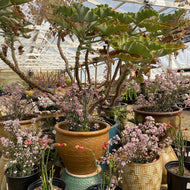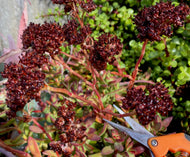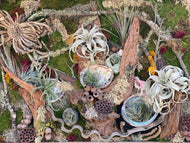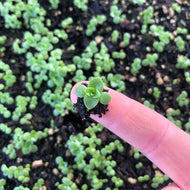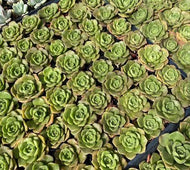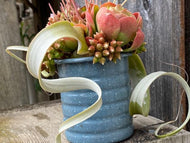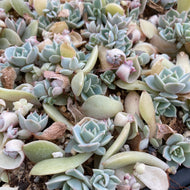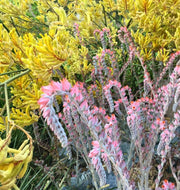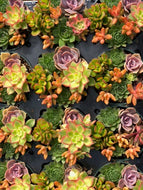
In a large raised bed near the southeast corner of Succulent Gardens is a row of Aloe ferox plants, whose thick, toothed arms reach out in curls. We’re not raising them to sell, but for their seed.
Their sturdy, brightly colored blooms arrived in December, and this week, Brian Kemble and Walker Young, the curator and assistant curator at the Ruth Bancroft Garden in Walnut Creek, came to the nursery to work on pollinating the plants.
Because we have plants with assorted bloom colors—orange, pink, white, and combinations of those—the plan was to mate orange with orange, pink with pink, and so on, so that the next generation’s bloom color is sharp.
No sooner had they arrived than Brian and Walker noticed that bees had beaten them to most of the pollen in the stand of about 18 Aloe ferox. But Brian discovered that on one of the white-blooming plants, some flowers were butting up against a branch and inaccessible to bees. He plucked some of those blooms and the two men set to work.
They rubbed the pollen-carrying anthers of the flowers from that white-bloomer into the receptive stigmas in flowers of another white-blooming plant nearby.In about a month, Brian tells us, we should see red seedpods hanging on the stalk where those receptive flowers were. The seeds will be shared between the Ruth Bancroft Garden and Succulent Gardens.
It’s a matter of years before we’ll have any plants to sell from this week’s pollination session, but when they grow up, they should have crisp white blooms, just like their parents.

